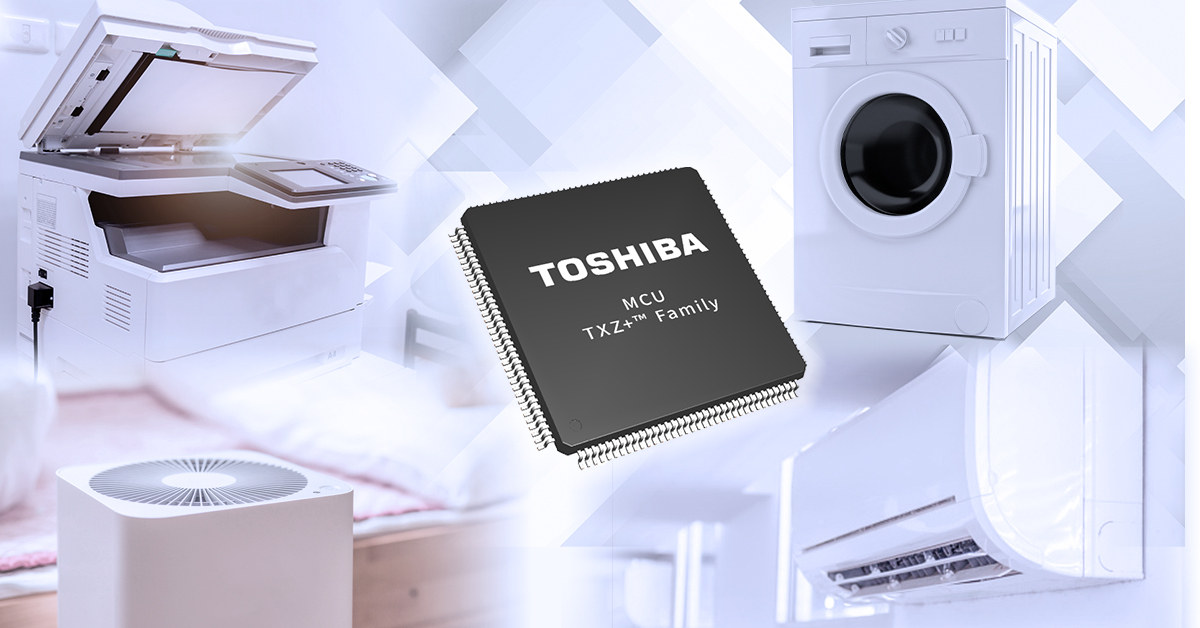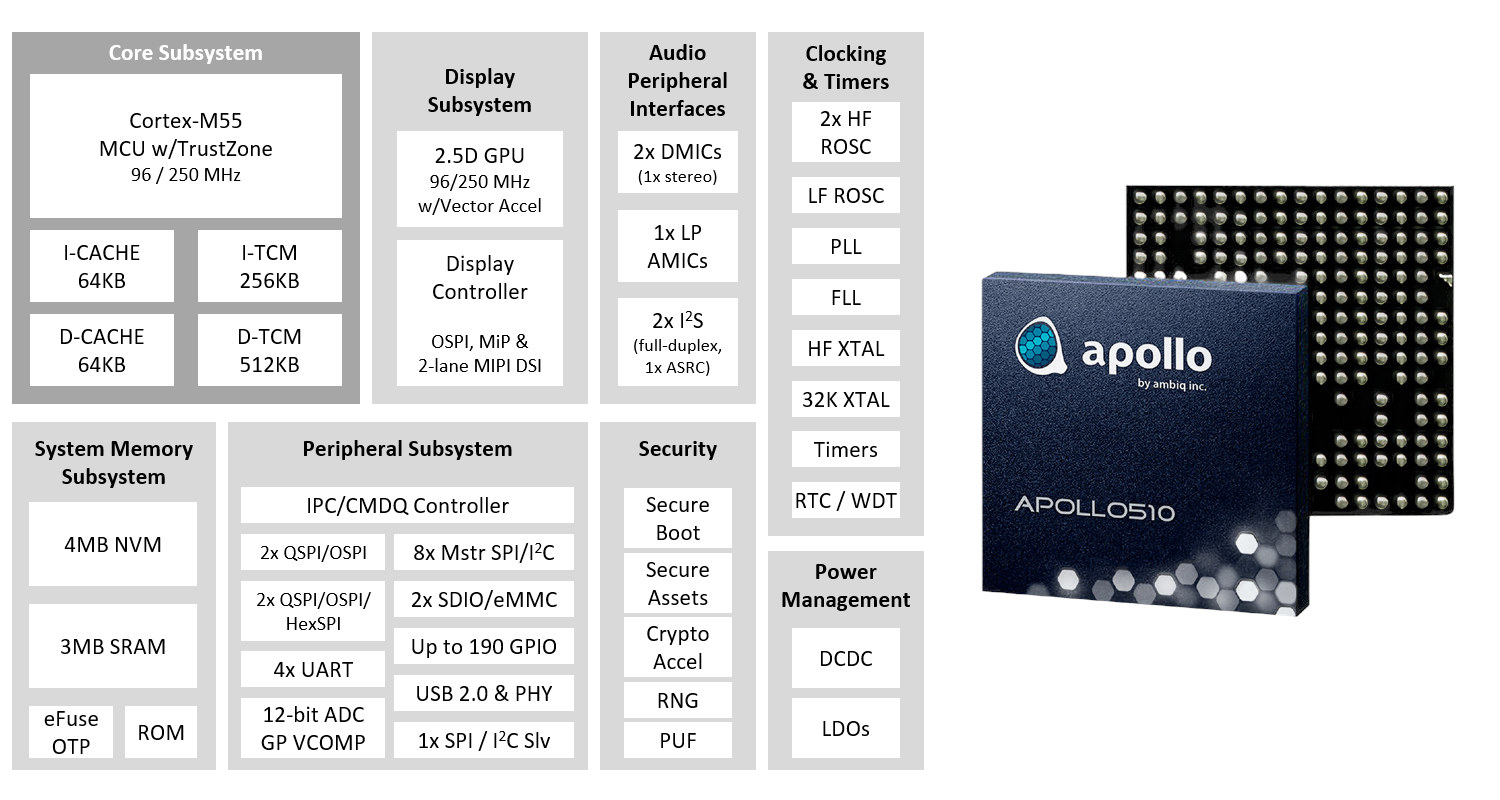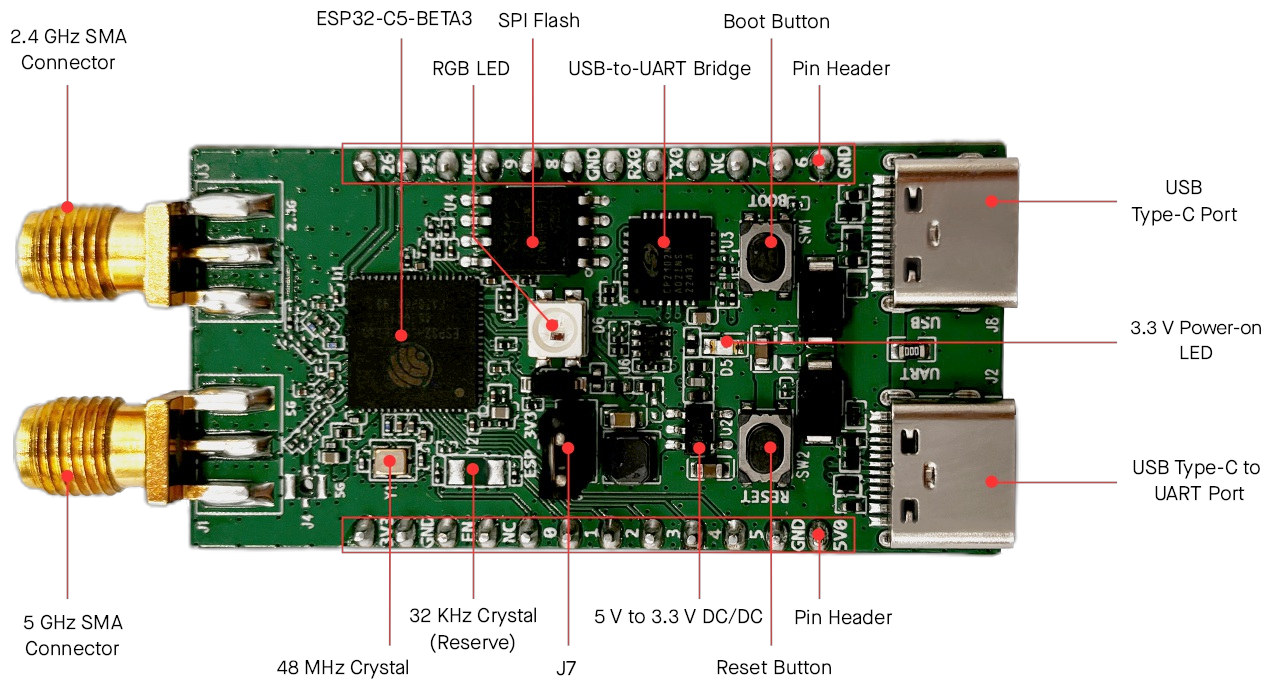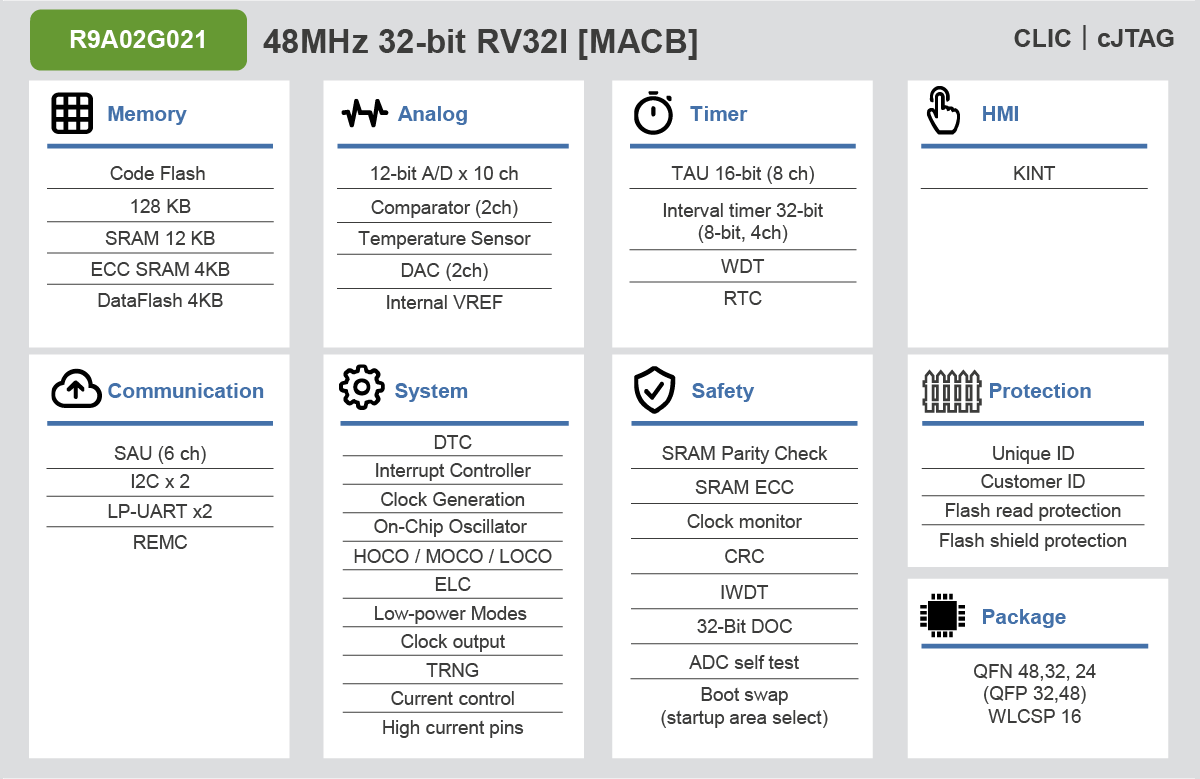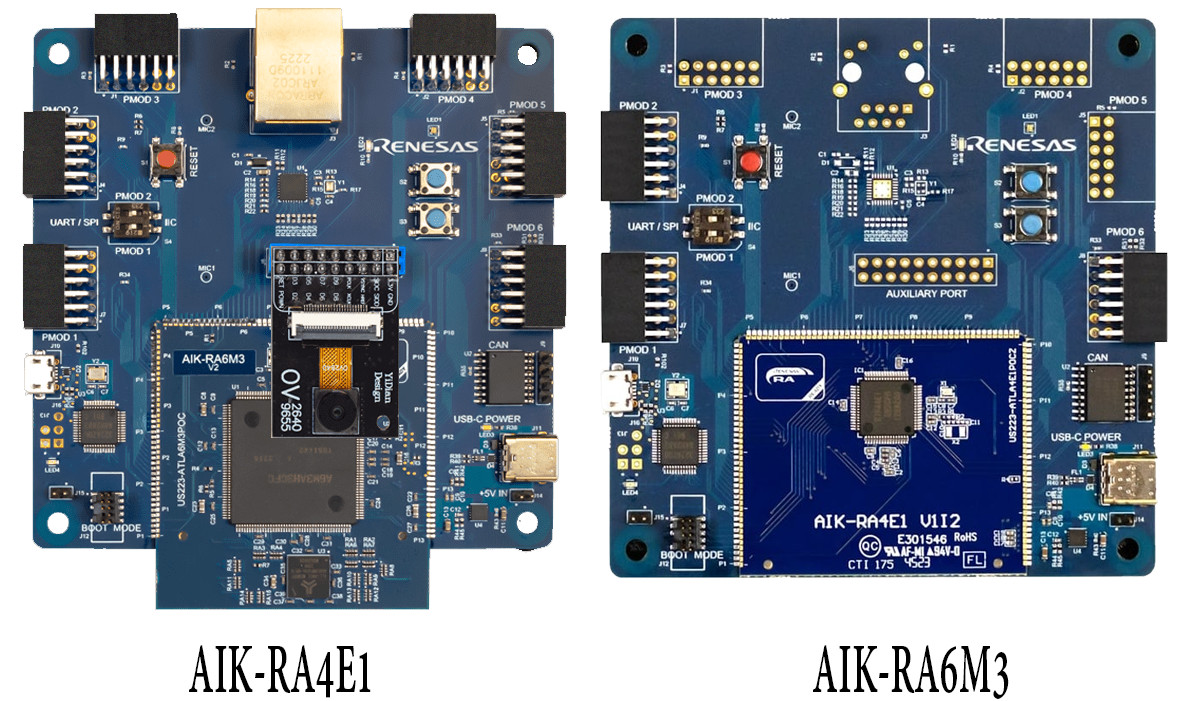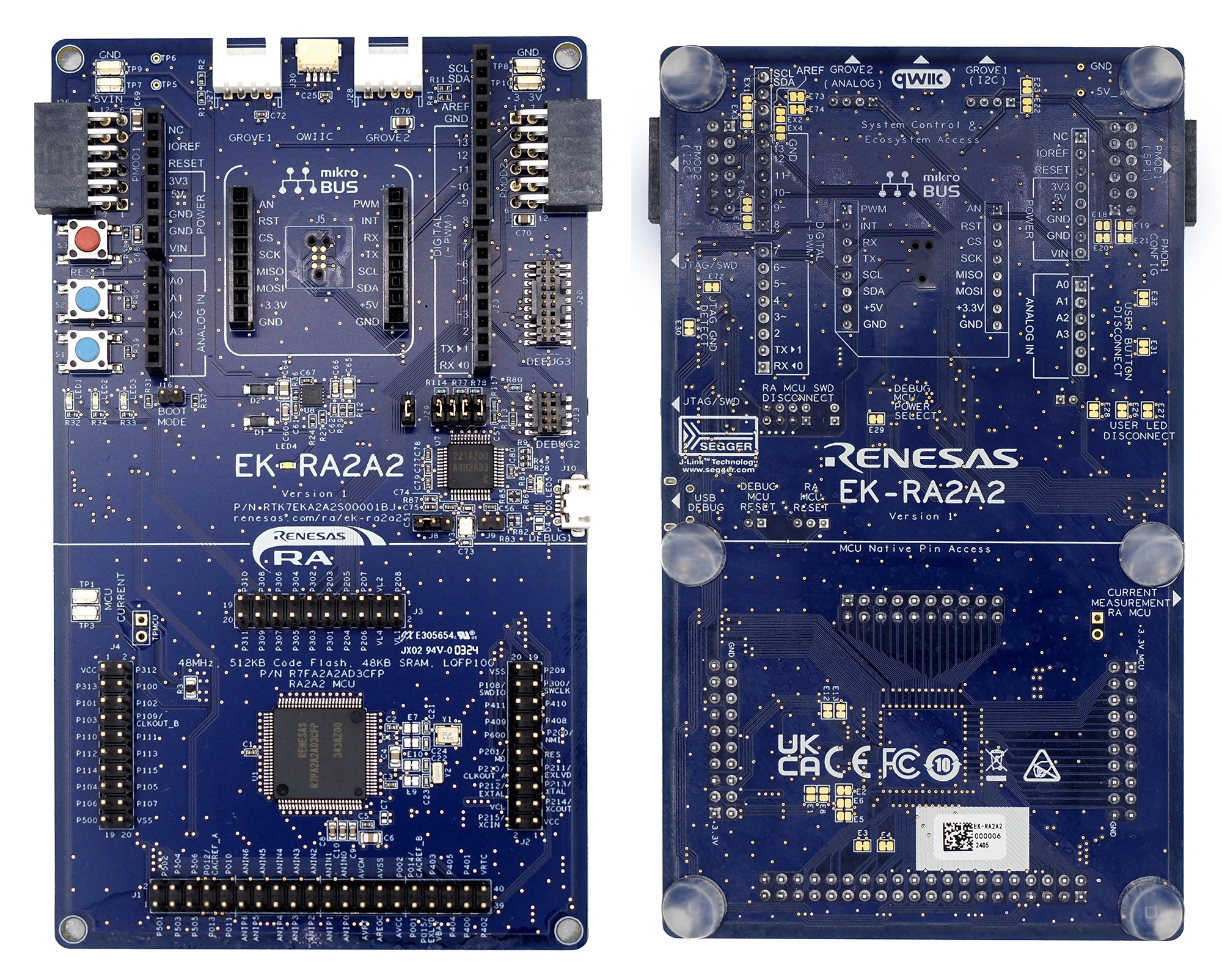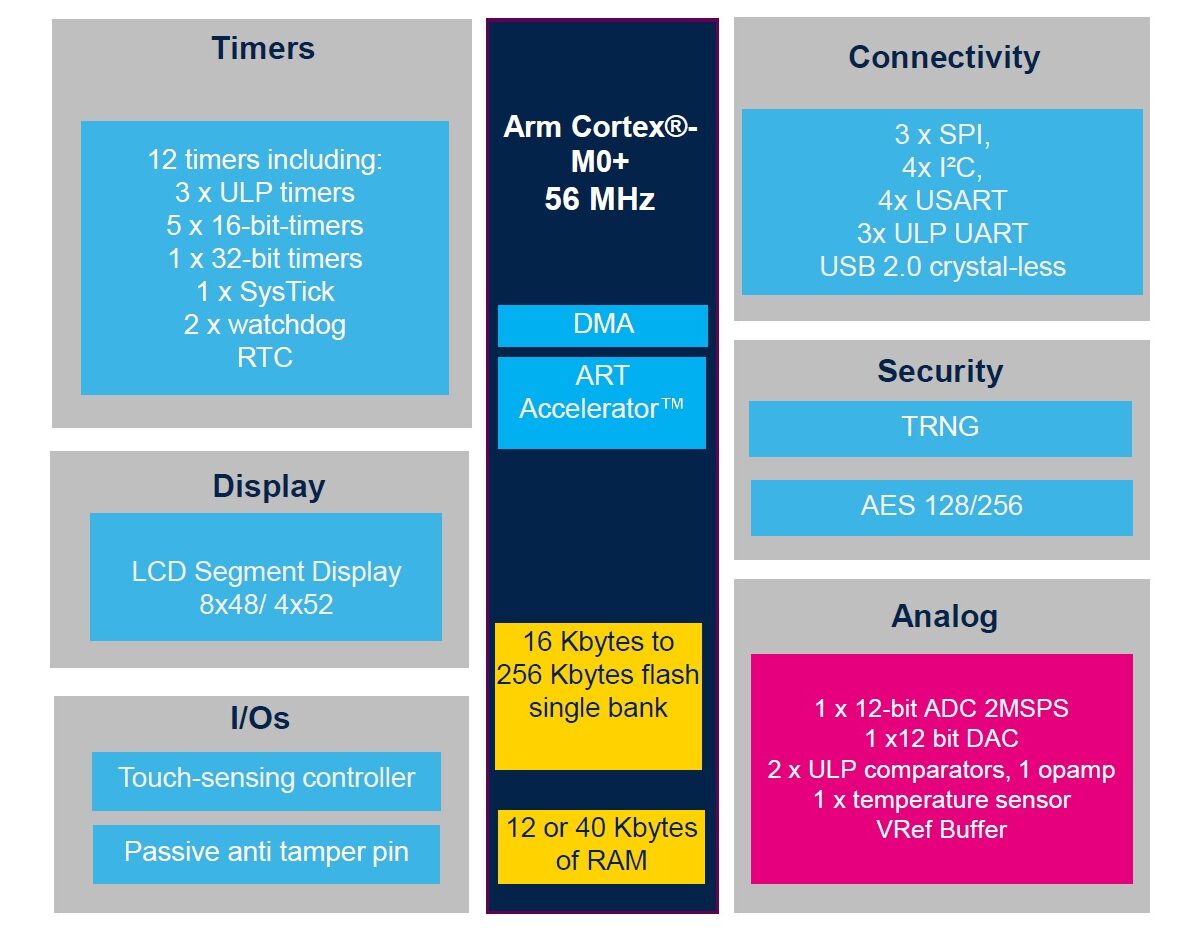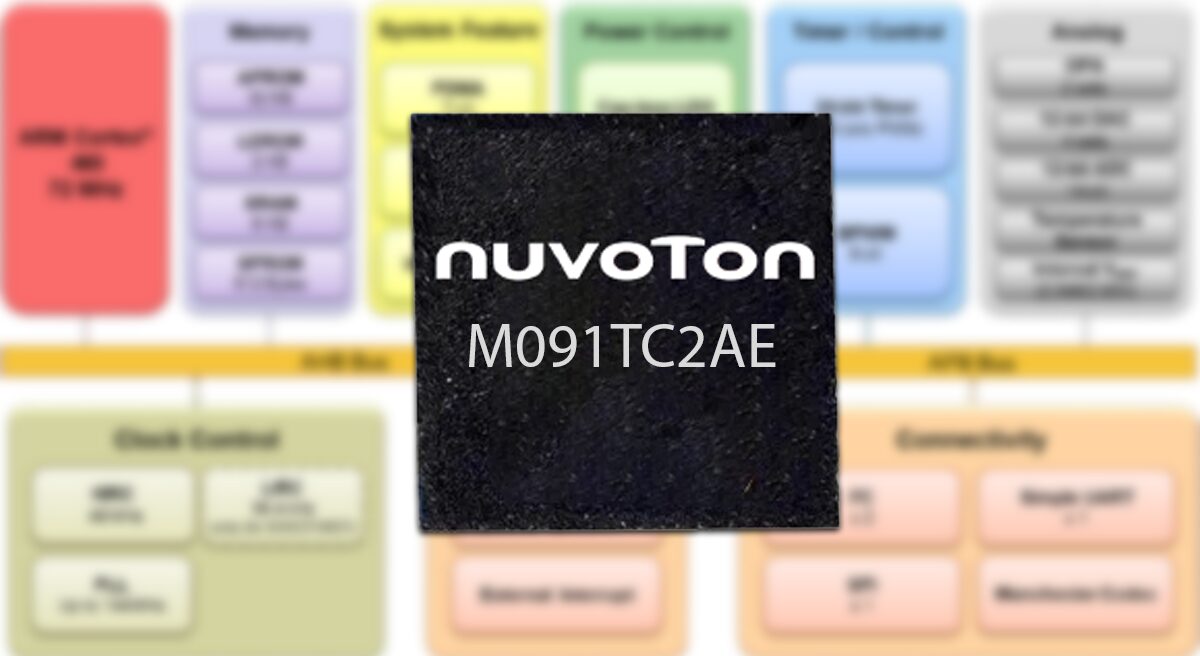Toshiba has included eight new products with 512KB/1MB flash storage capacity and four packages in its M4K Group of Arm Cortex-M4-powered microcontrollers. The M4K Group is part of Toshiba’s TXZ+ Family Advanced Class, consisting of five groups of low-power, high-performance 32-bit microcontrollers. The new microcontrollers expand code flash memory to 512KB/1MB from the 256KB maximum supported by current products, and RAM capacity to 64KB from 24KB. They retain the Arm Cortex-M4 core, integrated code flash, and 32KB data flash memory (with 100K program/erase cycles). With different motor control options such as advanced programmable motor circuits, advanced 32-bit encoders, advanced vector engine plus, and three units of high-speed, high-resolution 12-bit analog/digital converters, these class of microcontrollers are quite capable of 3-motor control, even in small scale applications (64-pin). The new products with 1MB code flash separate the memory into two distinct 512KB areas, enabling memory swap and seamless over-the-air firmware updates, […]
Ambiq Apollo510 Arm Cortex-M55 MCU delivers up to 30x better power efficiency for AI/ML workloads
Ambiq Apollo510 Arm Cortex-M55 microcontroller delivers 30 times better power efficiency than typical Cortex-M4 designs and 10 times the performance of the Apollo4 Cortex-M4 sub-threshold microcontroller for AI and ML workloads. The new MCU also comes with 4MB NVM, 3.75MB SRAM, a 2.5D GPU with vector graphics acceleration that’s 3.5 times faster than the Apollo4 Plus, and support for low-power Memory-in-Pixel (MiP) displays. Like all other Ambiq microcontrollers, the Apollo510 operates at sub-threshold voltage for ultra-low power consumption and implements security with the company’s secureSPOT platform with Arm TrustZone technology. Ambiq Apollo510 specifications: MCU Core – Arm Cortex-M55 core up to 250 MHz with Arm Helium MVE, Arm TrustZone, FPU, MPU, 64KB I-cache, 64KB D-cache, 256KB I-TCM (Tighly Coupled Memory), 256KB D-TCM, Graphics – 2.5D GPU clocked at 96 MHz or 250 MHz with vector graphics acceleration, anti-aliasing hardware acceleration, rasterizer/full alpha blending/texture mapping, texture/framebuffer compression (TSC4, 6, 6A and […]
ESP32-C5 beta board features 2.4GHz and 5GHz SMA antenna connectors, two USB-C ports
Espressif ESP32-C5 microcontroller was announced in June 2022 as the first dual-band WiFi 6 IoT chip from the company. It’s been quiet since then, but things are about to change as the ESP32-C5 beta board’s documentation has very recently been released. The ESP32-C5 was initially announced as a dual-band WiFI 6 and Bluetooth 5.0 LE SoC, but the user manual for the beta board indicates that it also supports Zigbee 3.0 and Thread 1.3, so there’s an 802.15.4 in the wireless microcontroller. The ESP32-C5 board itself features two SMA connectors for 2.4 GHz and 5GHz antennas or test equipment, two USB-C ports, two 12-pin GPIO header, Boot and Reset buttons, an RGB LED, and a 2-pin header for current measurements. ESP32-C5 beta board specifications: SoC – ESP32-C5-BETA3 CPU – Single-core 32-bit RISC-V processor @ up to 240 MHz Memory – 400KB SRAM on-chip Storage – 384KB of ROM on-chip, support […]
R9A02G021 is the first microcontroller with Renesas 32-bit RISC-V CPU core design
Renesas R9A02G021 is the first MCU group to use the company’s in-house designed 32-bit RISC-V CPU core with 3.27 CoreMark/MHz, RV32I base plus M/A/C/B extensions, and features such as a stack monitor register, a dynamic branch prediction unit, and a JTAG debug interface. Renesas has been making RISC-V chips at least since 2022 with the likes of RZ/Five 64-bit microprocessor and R9A06G150 32-bit voice control ASSP. All those were based on Andes RISC-V cores, but since the company has now designed its own 32-bit core, future Renesas 32-bit RISC-V microcontrollers are all likely to feature the in-house core, starting with the R9A02G021 general-purpose MCU group. Renesas R9A02G021 key features and specifications: RISC-V Core Renesas RISC-V instruction-set architecture (RV32I + MACB + Ziscr, Control and Status Register (CSR) instructions + RISC-V Zifencei Instruction-Fetch Fence) Maximum operating frequency – 48 MHz Debug and Trace – RISC-V External Debug Support cJTAG Debug Port […]
Renesas AIK-RA4E1 and AIK-RA6M3 reference kits are designed for accelerated AI/ML development
Renesas AIK-RA4E1 and AIK-RA6M3 are two new development boards based on RA-series 32-bit microcontrollers. These new dev boards have multiple reconfigurable connectivity functions to accelerate AI and ML design and development time. Both boards appear similar, but the AIK-RA4E1 uses the R7FA4E110D2CFM MCU, features three Pmod ports, and has no Ethernet support. On the other hand, the AIK-RA6M3 utilizes the R7FA6M3AH3CFC MCU, has six Pmod ports, and includes Ethernet support. Both the boards support full-speed USB and CAN bus. Renesas AIK-RA4E1 and AIK-RA6M3 reference kits specifications (Consolidated): RA4E1 Microcontroller Features: Model: R7FA4E110D2CFM Package: 64-pin LQFP Core: 100 MHz Arm Cortex-M33 SRAM: 128 KB on-chip Code Flash Memory: 512 MB on-chip Data Flash Memory: 8 KB on-chip RA6M3 Microcontroller Features: Model: R7FA6M3AH3CFC Package: 176-pin LQFP Core: 120 MHz Arm Cortex-M4 with FPU SRAM: 640 KB on-chip Code Flash Memory: 2 MB on-chip Data Flash Memory: 64 KB on-chip Connectivity: One USB […]
Renesas RA2A2 Arm Cortex-M23 microcontroller offers high-resolution 24-bit ADC, up to 512KB dual-bank flash
Renesas Electronics RA2A2 Arm Cortex-M23 microcontroller (MCU) group offers a 7-channel high-resolution 24-bit Sigma-Delta ADC, as well as dual-bank flash and bank swap function for an easier implementation of firmware over-the-air (FOTA) updates. The 48MHz MCU also comes with 48KB SRAM, up to 512KB code flash, various interfaces, and safety and security features that make it suitable for smart energy management, building automation, medical devices, consumer electronics, and other IoT applications that can benefit from high-resolution analog inputs and firmware updates. Renesas RA2A2 specifications: MCU core – Arm Cortex-M23 Armv8-M core clocked at up to 48 MHz Arm Memory Protection Unit (Arm MPU) with 8 regions Memory 48 KB SRAM Memory Protection Units (MPU) Memory Mirror Function (MMF) Storage Up to 512 KB code flash memory in dual bank (256 KB × 2 banks); bank swap support 8 KB data flash memory (100,000 program/erase (P/E) cycles) Peripheral interfaces Segment LCD […]
STMicro announces ultra-low-power STM32U0 MCU, unveils 18nm FD-SOI process for STM32 microcontrollers
STMicro has announced the ultra-low-power STM32U0 Arm Cortex-M0+ microcontroller family running up to 56 MHz that reduces energy consumption by up to 50% compared to previous product generations such as STM32C0 or STM32L0 while targetting SESIP Level 3, PSA-Certified Level 1, and NIST certifications. Separately, the company also introduced a new 18nm FD-SOI manufacturing process for STM32 microcontrollers that will replace the 40nm process currently used. STMicro STM32U0 Cortex-M0+ MCU STMicro STM32U0 key features and specifications: MCU Core – Cortex-M0+ up to 54 MHz with ART accelerator Memory / Storage STM32U031x – 12KB SRAM, 16 to 64KB flash STM32U073x – 40 KB SRAM, 16 to 256 KB flash STM32U083x – 40 KB SRAM, 256 KB flash Display – LCD controller for 8×48 or 4×52 segment displays (STM32U073, STM32U083) Peripherals 3x I2C, 2x SPI, 4x USART, 2x low-power UART. Up to 21x capacitive sensing channels USB – 1x USB 2.0 device […]
Nuvoton’s NuMicro M091 Arm Cortex-M0 microcontroller targets industrial sensors
Nuvoton recently launched the NuMicro M091 Series of microcontrollers, these are 32-bit MCUs based on the Arm Cortex-M0 core, featuring 4 sets of operational amplifiers with 8 MHz gain bandwidth (GBW), 4 sets of 12-bit DAC, up to 16 channels of 2 MSPS 12-bit SAR ADC, a temperature sensor, and extensive I/O options. The MCU supports the NuMaker evaluation board and various third-party IDEs making this an ideal device for industrial sensing, smart sensors, and precision instrumentation applications. Previously we have seen Nuvoton release MA35H0 and MA35D1 both MPUs are based on Cortex-A35 cores, feel free to check those out if you are interested in the topic. Nuvoton NuMicro M091 MCU specifications: Processor ARM Cortex-M0 core Maximum clock speed: 72 MHz Memory Flash – Up to 64 KB SRAM – 8 KB LDROM – 2 KB (for user program loader) SPROM – 512 Bytes (for security protection) Analog Features 4x […]


